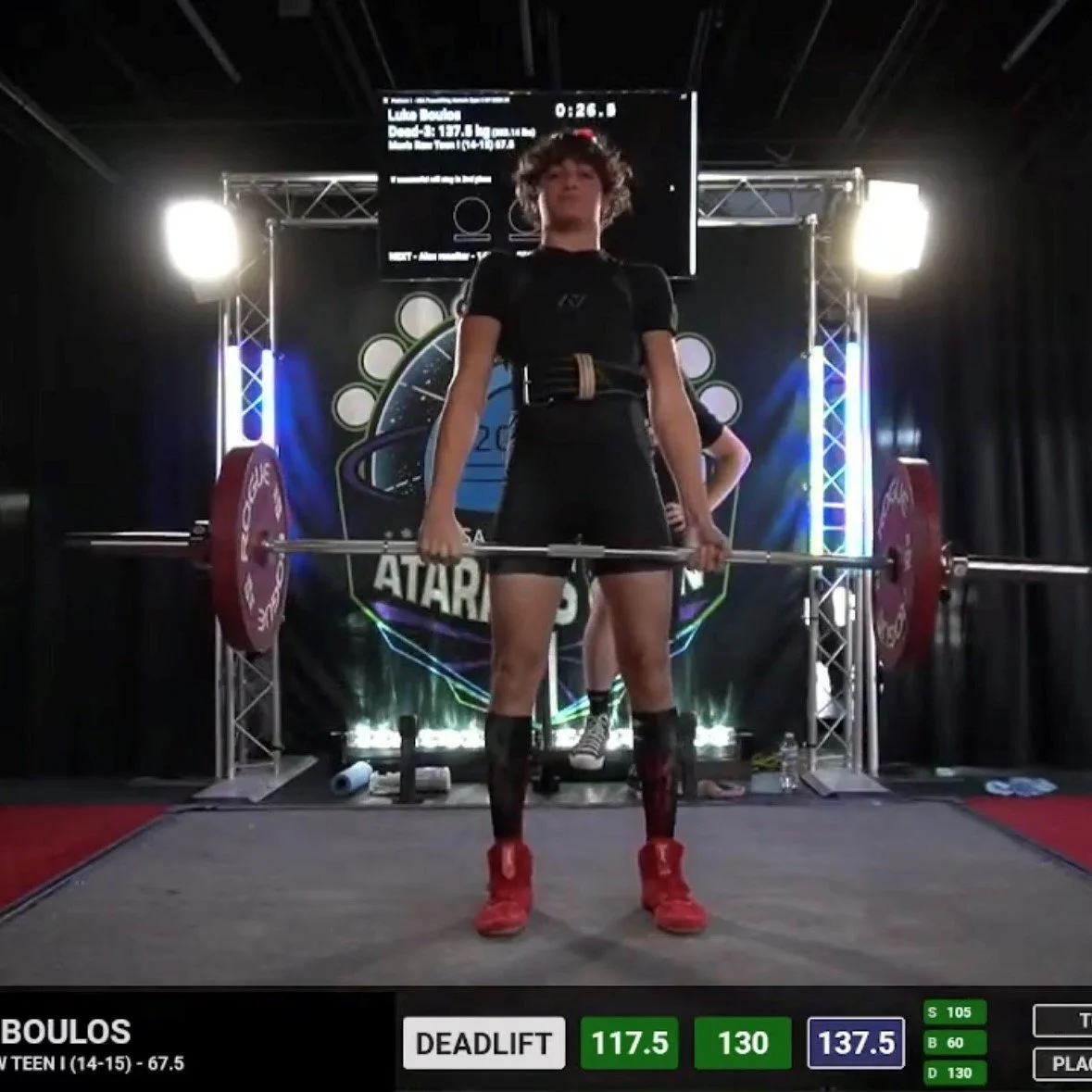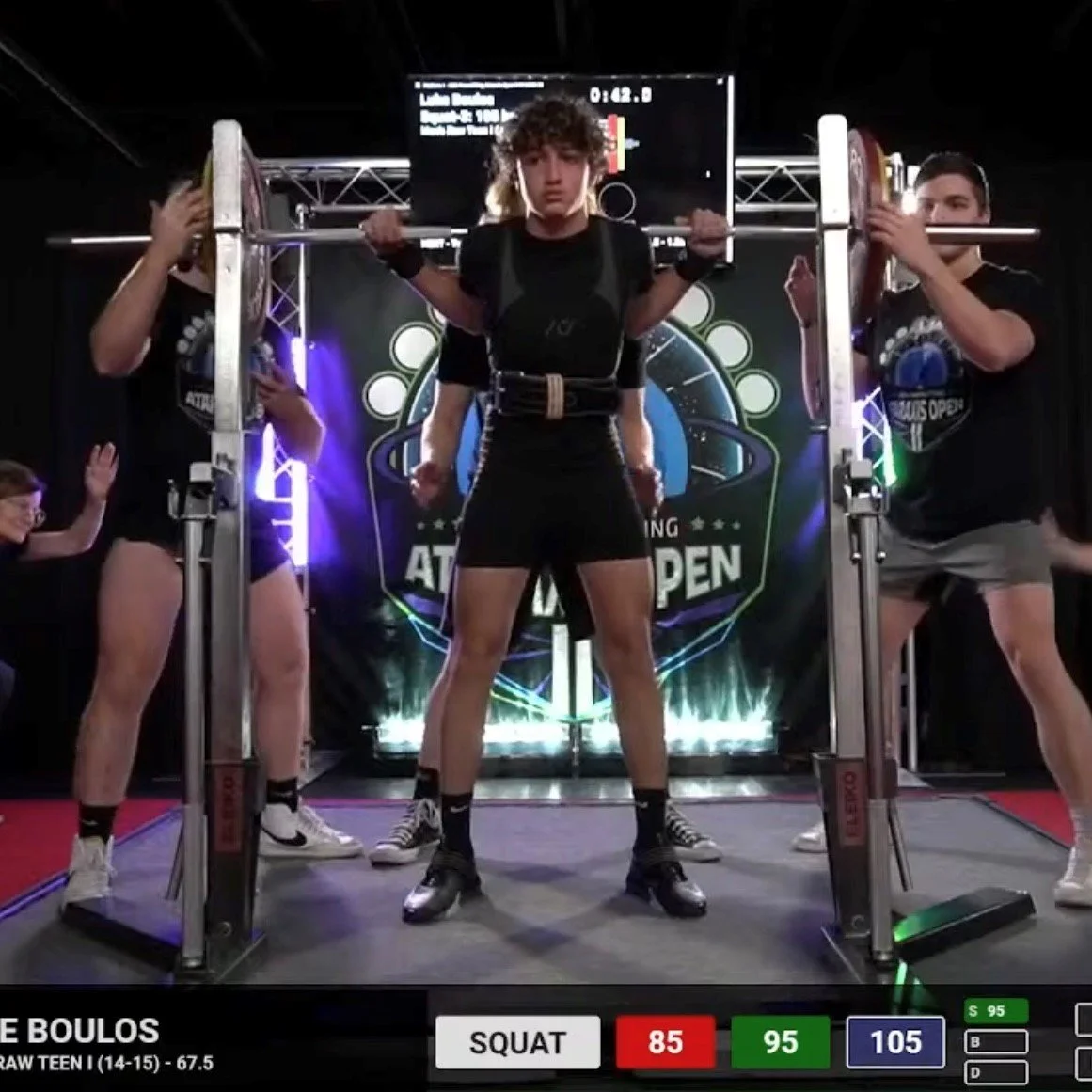Barbell Training for Teens
I wrote the article you’ll see below this and submitted it on a strength training website and forum that I follow. It’s about my 14 year old son and the experience he has had with weightlifting. And I wanted to provide some additional context about the experience for both him and me. I think we all know the value of sports for kids and all that it does. All the lessons and learned skills and behaviors are incredibly positive for all kids. Early on, it’s just about exposure, have fun, get some exercise and try lots of different athletic activities. As the kids grow and move towards middle school and around age 12, 13 and 14. Things turn competitive. Enter weightlifting!
Weight training is an incredibly safe activity when done correctly, which is pretty much the same with everything. No-one would discourage their kid from riding a bike or skateboarding…right? But done incorrectly or with poor “technique” and the kid is going to get hurt, really hurt. So spare me the, what if he/she gets hurt nonsense. Teach them how to do it right. And when done right, it’s about as safe a sport there can be. With one major advantage over some of the other activities. It builds incredible confidence and self-esteem. So a few things about training kids and kids lifting weights…
They should be in the heart of their puberty period. Before then, it’s best to stick with bodyweight exercises and calisthenics. Mostly because they won’t benefit from weightlifting. And if you’re a barbell junkie like me, get some PVC pipe that weighs next to nothing and have them simulate the movements; squats, benches, deadlifts, presses and oly lifts. I do this with my girls who are 8. Now some kids “mature” faster than others. There is something called the tanner scale that’s a good measure on kids physical development and kids should be at level 4 for weightlifting.
Compound Movements! I think everyone should just do these who are not “bodybuilders”, but that’s just me. But in kids, for sure…What does that mean, it means exercises that use the entire body to lift. Squats, deadlifts, presses, power cleans…you get the picture. But often, most people expose kids to what are know as isolation movements; bicep curl, leg extension, tricep pushdown. This is wrong, especially in kids that don’t have developed muscles, tendons and ligaments. Think about it, which muscles do you want the kids using, the smallest ones, or the bigger ones IE: Legs and back! What’s better, using one singular small muscle, the bicep for example, or recruiting both the legs and back to pick something up off the floor.
Keep it simple - 2 or 3 workouts per week with 2 or 3 exercises per workout. The thing about barbell movements as a novice lifter, which is someone new to strength training, is fast progress. People often confuse muscle soreness with progress and this is incorrect. Soreness is usually a product of a muscle seldomly used. Once the kid begins training, they should not feel sore after workouts. Which allows them at this age to train while also practicing whatever sport they play.
Measured Progress - progress at something is the root of engagement. When people and especially kids see themselves getting better at something. They devote more time to that something. Weightlifting allows for steady and fast progress with a ton of runway for young kids. So they can continue to make progress for a long period of time. And this is just another reason for the compound lifts. Because these lifts can progress for a long time, while the isolation ones, really can’t. Getting back to measured progress, the key behind that is to continue to add weight to the barbell and make the lifts more challenging. Think about the weight on the bar not as a number but as an amount that will develop progress. This is critical to the development of the kid. Even if you’re adding 1 pound. Think about it, if the goal is continued progress, to help the kid get stronger, which means get bigger. Then the weight done last week, will not cause the stimulation sought. So if I lifted 100 pounds today and the kids body adapts to that weight. To get the same stimulus previously you need to make the weight heavier.
Article I wrote and submitted on a Strength Training Forum:
I wanted to share a story with the community that I’m proud of and excited to write about. I started my son on the NLP right after he turned 14 last April. He’s always been a good athlete and tried many different sports. He settled on basketball and flag football and for anyone who has kids, these sports start to turn competitive around the 7th and 8th grade. Prior to that, everyone plays who signs up and it’s just for fun. By 8th grade they start cutting kids and have defined starting and backup roles.
My son tried out for the 8th grade school basketball team with many of his friends that he had been playing with through most of elementary and middle school. And he was one of the last cuts and didn’t make the team. I remember that day, coming home from school and the disappointment he felt. Feeling like he was a better player than some that made it. And truth be told, I felt the same way. But we didn’t whine or complain about it, we talked about what we could control and what we couldn’t. I told him he still had his whole HS career to look forward to and that being a HS athlete was an attainable goal.
To his credit, he didn’t whine or sulk, we found other Rec and CYO basketball teams to join so he could work on his game. And we went to work in the weight room! I explained to him that his height, and God given athleticism was something we had no impact on, but strength and conditioning we could affect.
We went to work, training 2-3 days per week starting last April. He played his last flag football season this past spring and at that point, to continue playing football, he would need to move to tackle football. His flag coach noticed that he had become a much bigger and explosive athlete and urged him to tryout for the HS Football Team. They only have JV and Varsity, so he’d be a freshman, playing with both sophomores and freshman. At this point, he had been training for about 5 months. And here are the results…
Not only did he make the football team, but they made him the starting middle linebacker, 1 of only 3 freshmen to start. Once football season ended, he rolled into basketball preparation. Our HS school district is big, 47 kids tried out for basketball, and they selected 12. Not only did he make the team, but he’s also the starting forward and is preparing for the season opener on December 5th. He’s a competitive kid, with a natural work ethic. To keep him engaged as well with his weight training. There happened to be a USAPL event happening on December 2nd that we signed up for back in September. He competed in that event yesterday. In April, he was squatting 65 LB, deadlifting 95 LB and benching the bar. He hit 231 in the squat, 143 in the bench and 303 in the deadlift with a good amount in the tank.
While he is a very good natural athlete, the mindset and confidence built under the bar these last 7-8 months has been incredible. It’s allowed him to unlock some of that athleticism and achieve what he’s capable of. I wanted to share this story because I thought many here would appreciate seeing much of what’s talked about around the SS community being realized in a young athlete and kid. It’s made a world of difference for my son.
Thanks for reading - Henry


